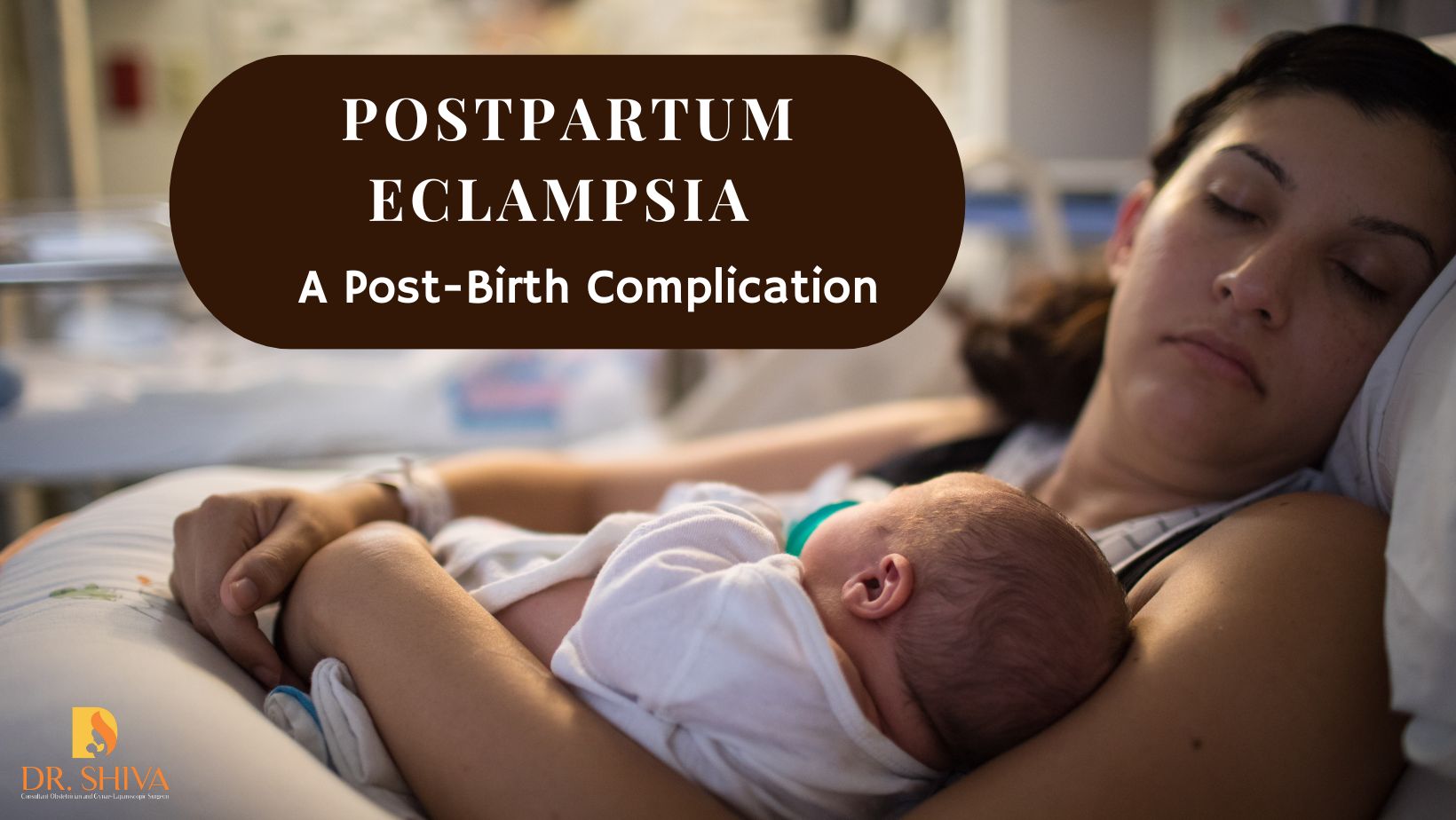
Bringing a new life into the world is a moment of joy, but for some mothers, postpartum complications can arise, and one such concern is postpartum eclampsia. Postpartum eclampsia, a potentially life-threatening condition, can strike even after a seemingly smooth delivery. In this guide, we’ll delve into understanding postpartum eclampsia, its symptoms, risk factors, and the crucial steps in recognizing and managing this condition.
A Misconception Unmasked
Many believe preeclampsia, characterized by high blood pressure and protein in urine, ends with delivery. However, this isn’t always true. It is a rare but serious condition characterized by seizures in the post-delivery period. The threat can reappear, typically occurs within the first 48 hours after childbirth, and may extend up to the first six weeks postpartum.
Causes
The exact cause of postpartum eclampsia is not known. Some theories suggest:
- Placental remnants: Tiny fragments of the placenta might linger, disrupting blood flow and triggering inflammation.
- Vascular changes: Pregnancy-induced adjustments in blood vessels might not fully reverse, leading to high blood pressure.
- Immune system overdrive: The postpartum immune response might go into overdrive, contributing to inflammation and blood vessel constriction.
Symptoms
Early identification of symptoms is vital. Watch for warning signs such as severe headaches, visual disturbances, abdominal pain, and changes in mental state. Seizures may follow, marking a critical phase that demands immediate medical attention.
- Postpartum eclampsia often mimics typical postpartum discomforts, making it easy to miss. Yet, vigilance is key. Watch out for these warning signs:
- Severe headaches: Unrelenting headaches that don’t respond to pain medication could be a red flag.
- Visual disturbances: Blurred vision, flashing lights, or even temporary blindness can be ominous signs.
- Upper abdominal pain: Persistent pain in the upper right abdomen, near the ribs, may require immediate medical attention.
- Swelling: While some swelling is normal after delivery, sudden or excessive swelling in the face, hands, and feet warrants concern.
- Changes in mental state: Confusion, anxiety, or even seizures can be alarming symptoms of postpartum eclampsia.
Remember: If you experience any of these symptoms, seek immediate medical attention. Early diagnosis and prompt treatment are crucial in preventing life-threatening complications.
Risk factors
Certain factors increase the risk of postpartum eclampsia, including a history of preeclampsia during pregnancy, high blood pressure, multiple gestations (twins or more), and pre-existing medical conditions. Awareness of these factors aids in proactive monitoring.
Diagnostic Procedures
Healthcare providers may employ various diagnostic procedures, including blood pressure monitoring, blood tests, and neurological assessments. These aid in confirming the diagnosis and guiding appropriate interventions.
Treatment
Postpartum eclampsia is a medical emergency that requires swift intervention. Treatment often involves medications to control blood pressure, prevent seizures, ensuring adequate oxygen supply to both mother and baby and address any underlying issues. Close monitoring in a hospital setting is crucial.
- Medications: Drugs to lower blood pressure and prevent seizures.
- Supportive care: Close monitoring, hydration, and pain management are essential for recovery.
Post-Treatment Care
After the acute phase, ongoing monitoring and post-treatment care are vital. Medications may be continued, and regular follow-ups with healthcare providers help ensure the mother’s sustained well-being.
Emergency Response
In the event of seizures or suspected postpartum eclampsia, seeking emergency medical assistance is imperative. Immediate care focuses on stabilizing the mother, preventing injury during seizures, and managing blood pressure to avert complications.
Preventive Measures
While postpartum eclampsia cannot always be predicted, maintaining good prenatal care, managing pre-existing conditions, and promptly addressing signs of complications contribute to preventive measures.
Distinguishing from Post eclampsia from Preeclampsia
While postpartum eclampsia shares similarities with preeclampsia, it is crucial to differentiate between the two. While preeclampsia presents during pregnancy, postpartum eclampsia occurs after delivery.
Conclusion
The journey through postpartum eclampsia can be daunting, leaving emotional and physical scars. Being informed about postpartum eclampsia empowers you to be a vigilant advocate for your own health and that of your newborn. Regular checkups, open communication with your doctor, and awareness of the warning signs can make all the difference. Postpartum eclampsia, though rare, demands immediate attention and skilled medical care. A comprehensive understanding of symptoms, risk factors, and the urgency in seeking medical help empowers both healthcare providers and new mothers to navigate this condition with vigilance.

